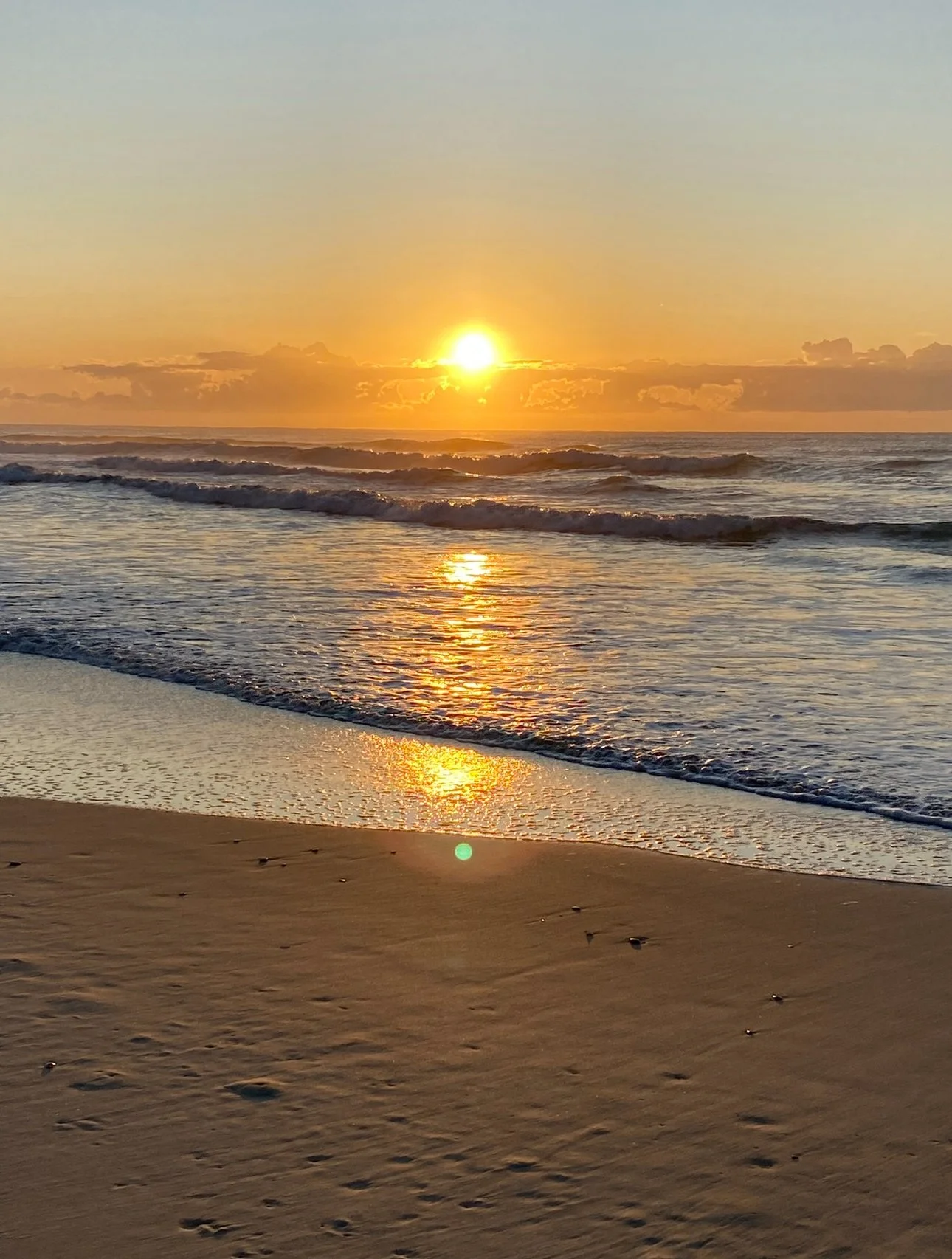Sunlight - its role in health, healing and longevity
As winter has set in and the light fades earlier each day, I have found myself chasing the sun, taking every opportunity to soak up its warmth. There is something instinctual about it, my body knows it needs this, not just for warmth, but for energy, for mood, for sleep, for life.
We are built to need sunlight
Over the past month, I have been diving deeper into the science and ancient wisdom behind sunlight’s powerful role in health, healing, and longevity and why it is about so much more than just vitamin D.
☀️ Why Sunlight & Vitamin D Matter
We have been told for decades, by health organisations, government, media, and mainstream medical professionals, to avoid the sun, to fear it, to block it with sunscreens, hats, and sunglasses.
But what if, in our efforts to protect ourselves, we have gone too far? What if, in blocking the sun, we have blocked a crucial signal our body depends on for energy, sleep, immune strength, and even cancer protection?
Learning from thought leaders like Dr Jack Kruse, Dr. Max Gulhane, and Dr Jalal Kahan has reshaped my understanding.
Sunlight is not just how we make vitamin D
· It is our biological language
· A signal that calibrates our circadian rhythm,
· Wakes our mitochondria, and
· Helps our body know when to wake, rest, repair, and regenerate
🌞 Sunlight vs Vitamin D Supplements
Vitamin D is important, but sunlight gives us so much more.
Dr. Michael Holick, a leading researcher in the field, found that 90–95% of our vitamin D comes from sunlight. Supplements may raise blood levels but they do not trigger the full cascade of benefits.
When UVB light hits our skin we not only produce vitamin D. It also produces:
· Nitric oxide (for blood flow)
· Serotonin (for mood)
· Melatonin (for sleep)
· Beta-endorphins (for that feel-good sun glow)
“Vitamin D supplements are useful, but sunlight gives you so much more than vitamin D.” Dr. Max Gulhane
🧠 Sunlight as a Circadian Signal
Neuroscientist Andrew Huberman emphasises that light is the most powerful regulator of our circadian rhythm. His research shows that early morning UVA sunlight, especially within the first hour of waking stimulates specialized cells in our eyes that signal to the brain:
“It’s daytime. Wake up, regulate your hormones, focus, and energize.”
This morning UVA light exposure:
· sets our internal body clock
· helps to regulate timing and levels of cortisol, melatonin production
· supports dopamine and serotonin production to regulate mood.
· prepares us for later exposure to UVB light.
“Morning sunlight is like a cup of coffee for your brain and hormone system.” Andrew Huberman.
🌤 Sunlight & Cancer – A New Perspective
In a recent talk at the Regenerate 2025 Summit in Melbourne, Dr. Max Gulhane offered a powerful reframe of sunlight – not as something to fear, but something to understand as essential.
“Our fear of the sun often overlooks its deeper biological value”.
Moderate, intentional sunlight (especially in the early morning or late afternoon) supports:
· mitochondrial health
· immune defence
· mood
· sleep
· resilience to cancer and chronic illness
Modern research supports this work – sunlight is not only safe in appropriate doses but essential to long term health.
· A 2025 meta-analysis published in Nutrients showed significantly lower cancer rates (including breast, colorectal, and prostate) among those with higher vitamin D levels.
· Even in people with existing skin cancer and melanoma, the risk of death is significantly lower in those with higher dose vitamin D from sun exposure.
· Another study found a 58% lower risk of colorectal cancer with sufficient vitamin D.
· Adequate vitamin D has been shown to reduce the risk from all cause mortality
These benefits were not fully replicated with supplements, reinforcing the idea that sunlight provides more than just a nutrient. It delivers signals our body has evolved to depend on for health.
🧴 What About Sunscreen?
Yes, sunburn damages the skin. But the solution is not to fear the sun but to build a healthier relationship with it.
Build your “solar callous” with slow, safe exposure
Know your skin type and the UV index
When needed, choose mineral-based sunscreens (zinc oxide), free from endocrine-disrupting chemicals like oxybenzone and fragrance
Use tools like D Minder or MyCircadian to guide your exposure safely
🌻 A Personal Note:
This study of sunlight and its benefits has taught me that it is not just about “getting enough vitamin D.” It is about reconnecting to the energy of sun and the earth, and to natural rhythm of our bodies.
I speak from my personal experience and research and my lived journey with skin cancers and a strong family history of melanoma. This is certainly not medical advice but it is an invitation to explore a little more.
For you:
If you have been spending most of your time inside behind windows, under artificial light, or behind computer screens, this is a gentle encouragement to:
· Get outside
· Let the sun touch your skin,
· Let your eyes meet the sky,
· Let your body feel the energy and nourishment of the sun.
If you would like to explore more, a great place to start is Dr. Max Gulhane’s podcast - Sunlight and Cancer - Beyond Skin Deep.
It is packed with insight, science, and practical tools to help you reconnect with the sun safely and meaningfully.

